This was the appearance on December 12
.jpg)
A week later, the appearance was still about the same.
I hunted through the woodpile and found what appears to be an old, aborted sample of this fungi.
The size is about the same as the above.
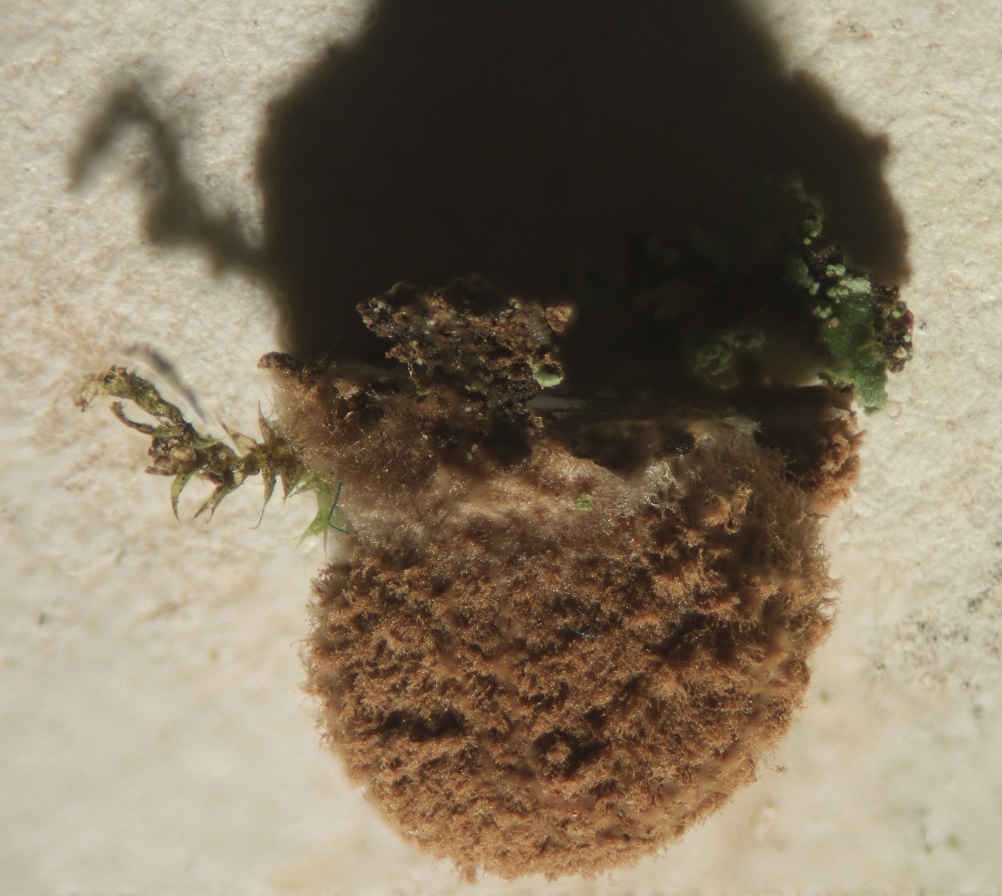
This brown sample was cut in two and the inside appears to be a still immature
sample with several peridioles buried in the interior matrix.
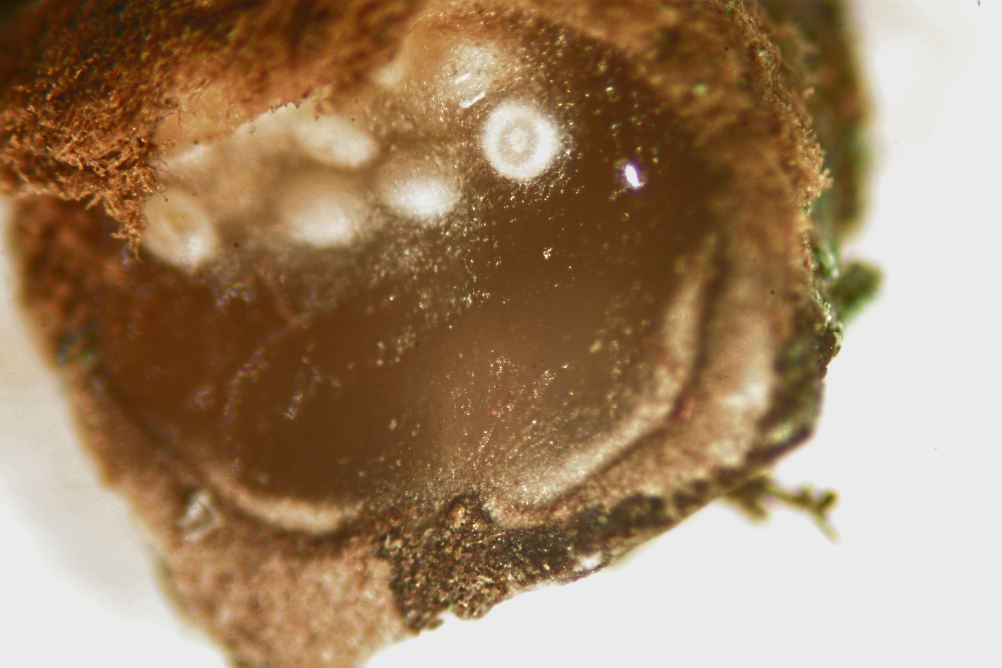
Today, December 23, the orange balls pictured in the first image have disintegrated / split open.
But not in the fashion of the usual bird's nests.
The weather throughout this period has been one of continual rail,
so there are no drying out effects.
Diameter is unchanged from the initial images, under 4 millimeters

It liooks more like pearls on the oyster shell than a bird's nest.
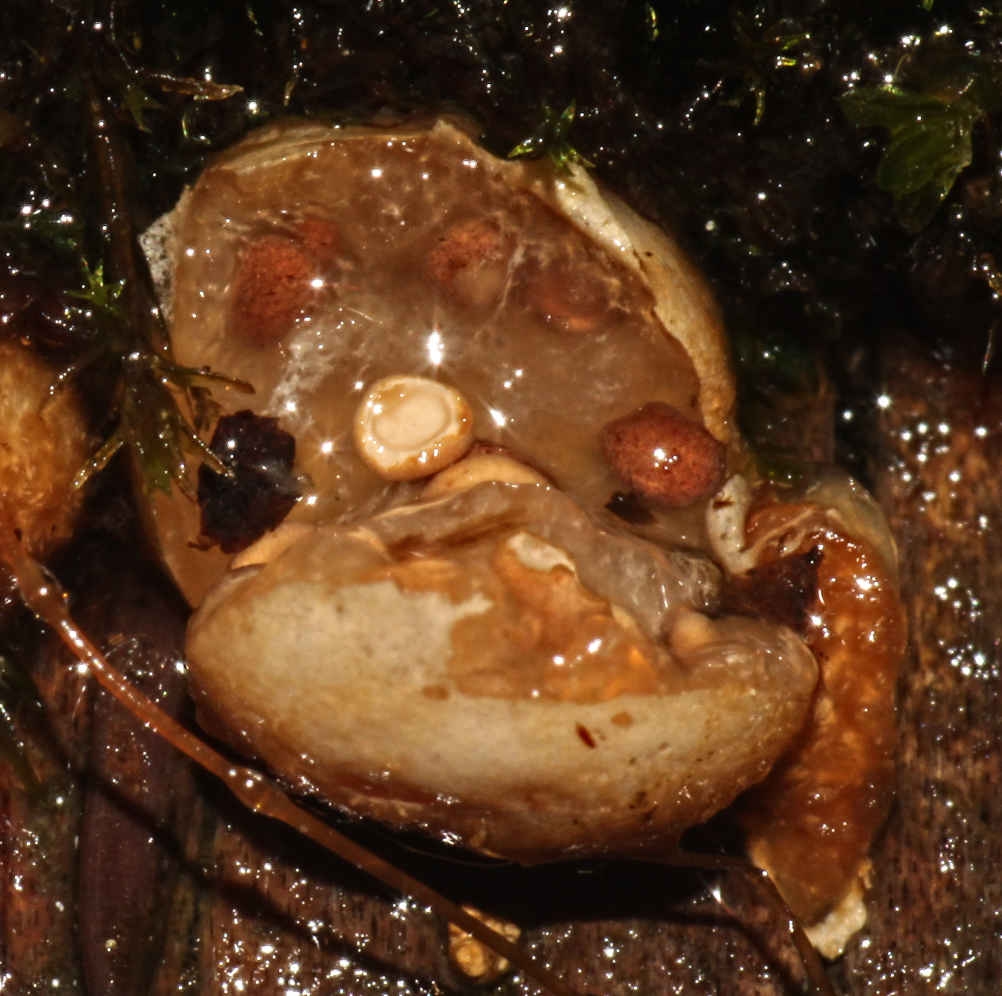
The last images, where the balls split open, do not show the hairy texture
on the outside that the brown, middle images show, but the interiors all
show the existence of peridioles.
Is the textural differences due to the differences in
weather patterns while the fungus matured?
Luurt: I'm not that good on the strange bird's nest fungi.
This one is something that I'm not familiar with.
The most likely candidate seems to be Nidularia pulvinata but I'm open to enlightenment.
Explanations for each picture are found adjacent to the image.
This little row of orange balls were on old,
rotten plywood, and were peeking out from underneath a layer of Minus moss.
The diameter of the balls was at most 3.4 millimeters each.
Sava: According to MatchMaker, the only other irregularly breaking bird nest
is Nidularia deformis (= N. farcta).
Macroscopic differences between them seem minor;
the form of the hyphae of the egg cortex differentiates them more reliably.
Luurt: This thing finally matured enough to remove and bring inside.
I wanted to check on the hypha and clamp connections.
This brought out a major oops in early identification.
There is something to be said for bringing the specimen inside for further observation.
This is NOT a fungus even though the initial observations sure seemed like it.
Here is the "matured" sample removed from outside after it started to disintegrate.
The eggs are the dark balls
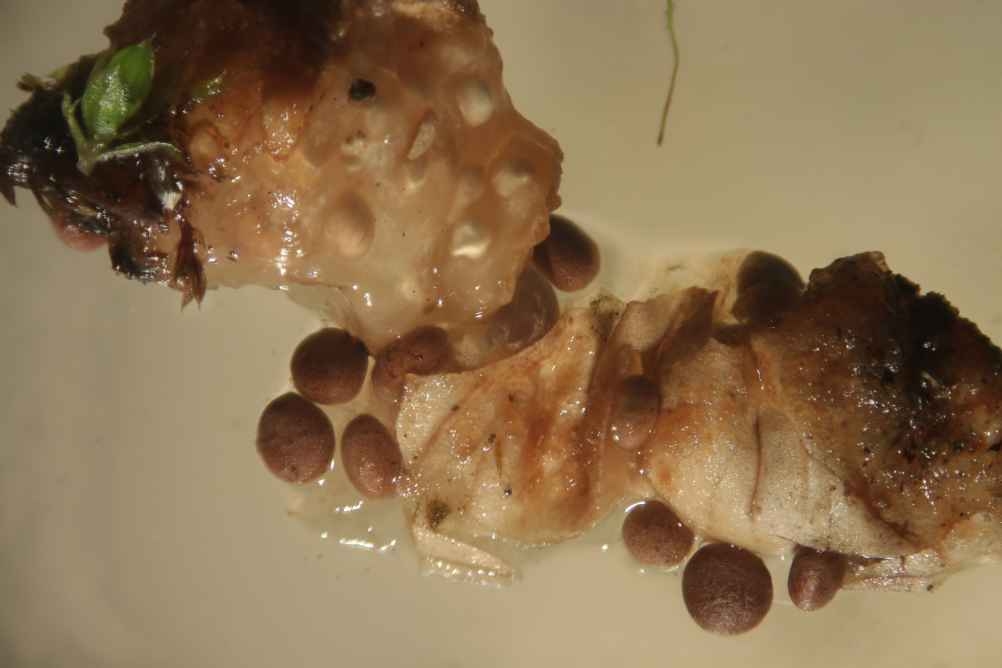
One half egg. The scale is in 1/10 millimeter increments.
The egg was very soft while still wet and easily cut in two (the blade probably flattened the shape).
It still looks a lot like a peridiole that has been transected.
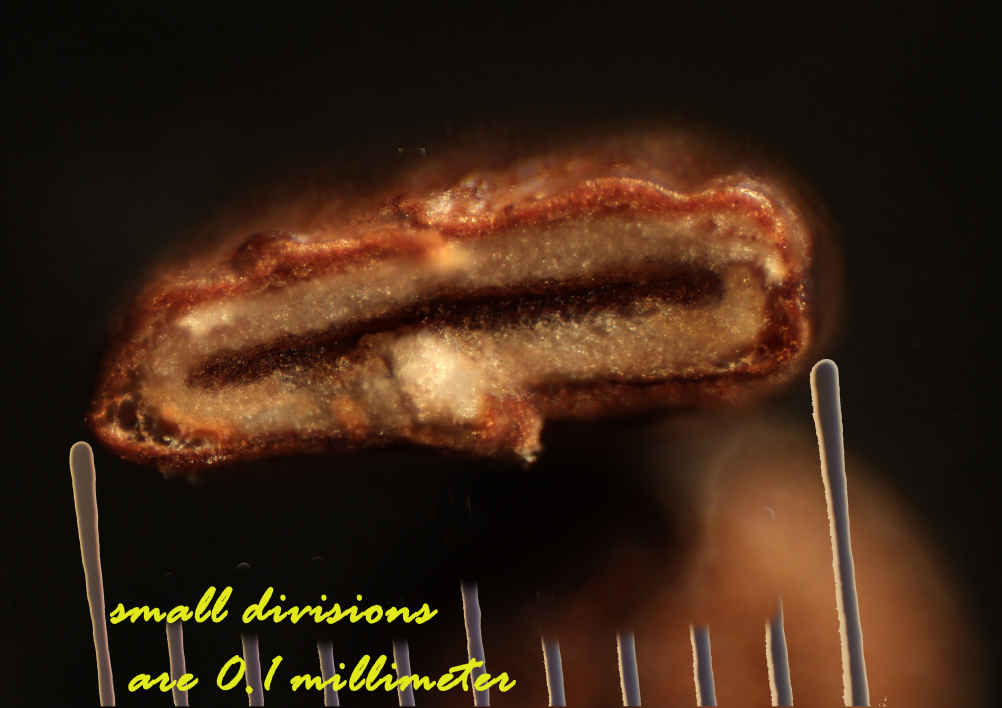
And finally a fragment of the outer case,
The inside looks like it has been created with mucilage,
similar to a number of other insect cases.
this sample is about 0.3 mm long. No hypha, no clamp connections.
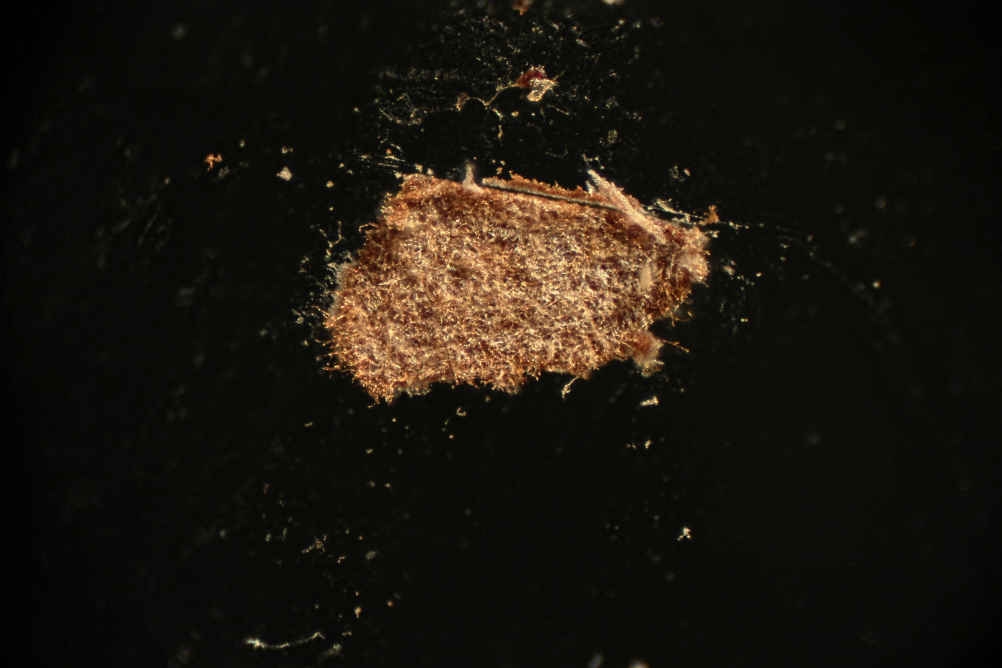
And finally a fragment of the outer case,
The inside looks like it has been created with mucilage,
similar to a number of other insect cases.
this sample is about 0.3 mm long. No hypha, no clamp connections.
Sava: Lots of fun this mushroom identification, isn't it?
Here is my pride: http://mushroomobserver.org/73142?q=x5CE
I was also surprised this fall when I saw these fungi:
Click here to see info on MushroomExpert.com
Click Here to see Info on Wikipedia
The egg was very soft while still wet and easily cut in two (the blade probably flattened the shape).
It still looks a lot like a peridiole that has been transected.
The inside looks like it has been created with mucilage,
similar to a number of other insect cases. this sample is about 0.3 mm long. No hypha, no clamp connections.
The inside looks like it has been created with mucilage,
similar to a number of other insect cases.
this sample is about 0.3 mm long. No hypha, no clamp connections.
Sava: Lots of fun this mushroom identification, isn't it?
Here is my pride: http://mushroomobserver.org/73142?q=x5CE
I was also surprised this fall when I saw these fungi:
Click here to see info on MushroomExpert.com
Click Here to see Info on Wikipedia